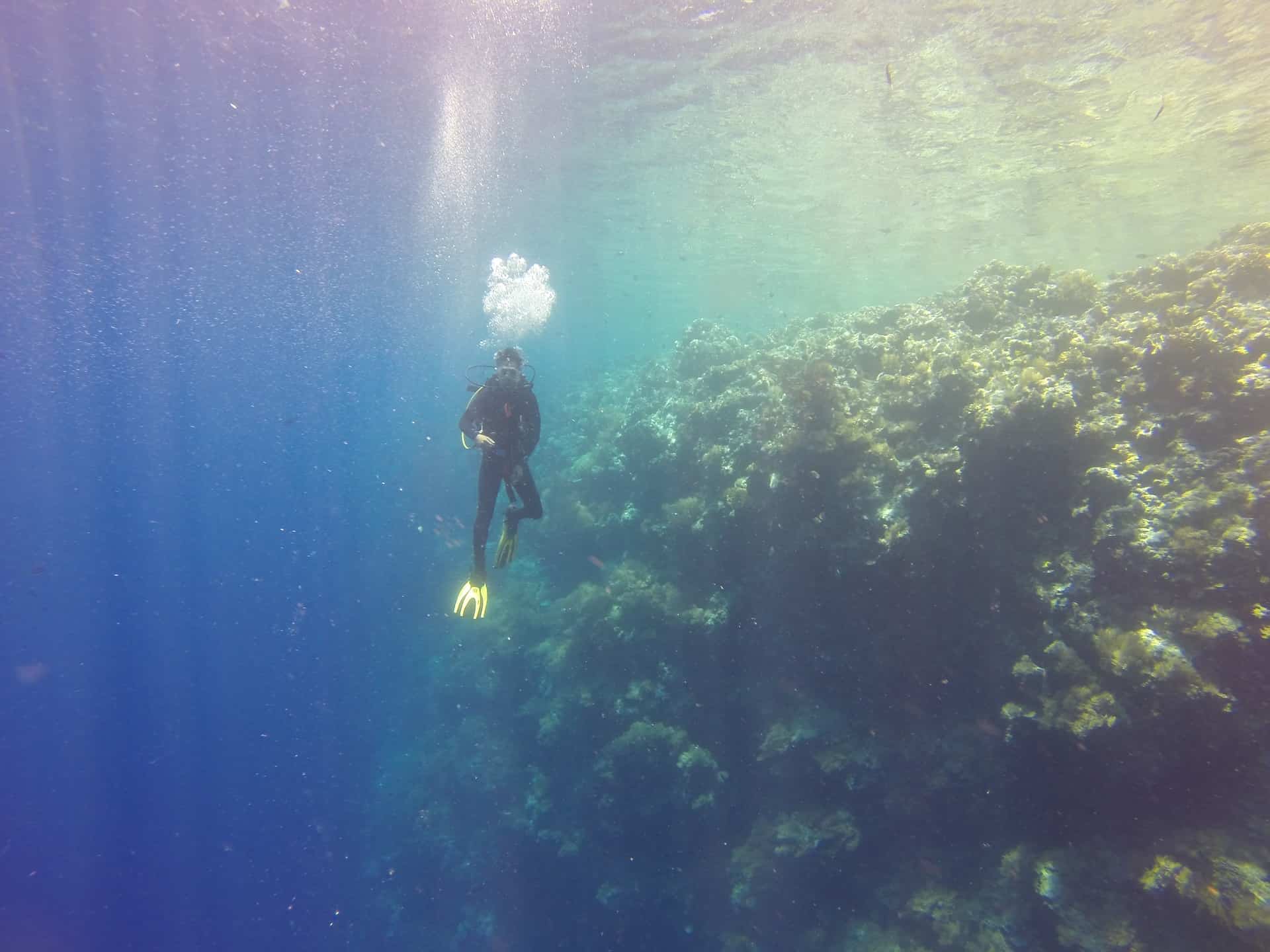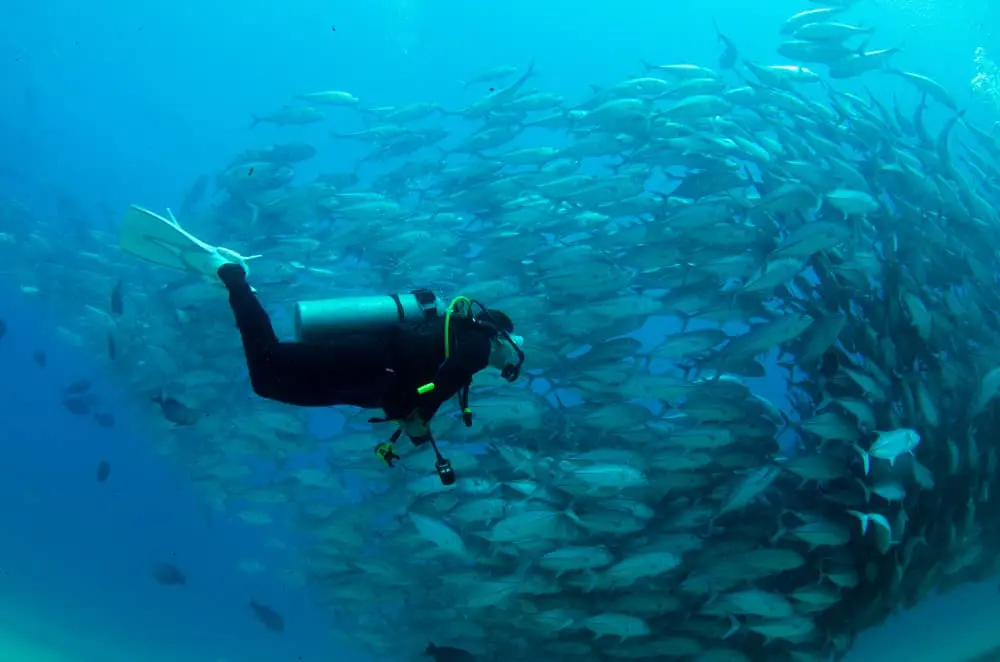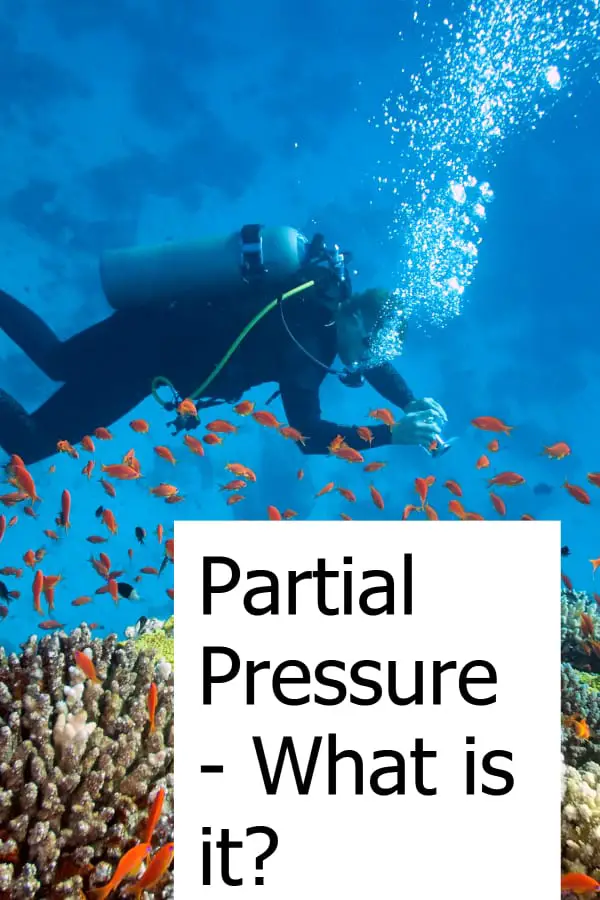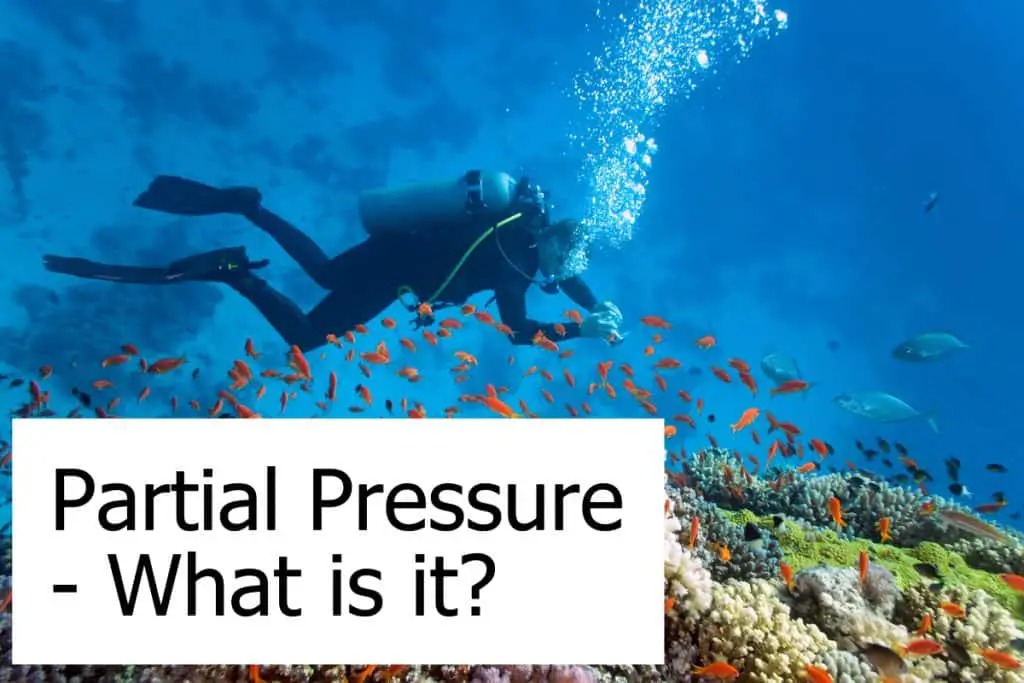Partial Pressure – What is it?
As a diver, it’s important to know the basic concepts of partial pressure, not only because it is central to a safe dive but also so that you won’t feel out of your element when having conversations with fellow divers.
That said, the science behind partial pressure is intricate, and information online tends to vary between too simplified and too technical. In order to get a thorough understanding of partial pressure without getting too bogged down in the physics, here’s our breakdown of this complex topic:
What Is Partial Pressure?
It all starts with Dalton’s Law, a law of physics proposing that the pressure of a gas is equal to the sum of its partial pressures. In a balloon (or a scuba tank, for that matter), the partial pressure of oxygen and nitrogen will add up to the total pressure within that container. That’s an easy enough concept to swallow, right?
As you probably know, things get a bit more complicated from there. For instance, what this law is really saying is that a gas’s partial pressure is equal to the percentage of that pressure multiplied by the total pressure in the enclosed space.
Let’s break that down a little bit. If there is 21% of oxygen in the tank, you could figure out its partial pressure by multiplying 0.21 (which is just 21% in decimal form) and the pressure in atmospheres. So, if you are at sea level when atmospheres are just 1, you would multiply 0.21 by 1 and get 0.21 atm. At the same time, the tank is likely to be 79% nitrogen. The partial pressure of nitrogen is 0.79. We can get the total pressure by adding 0.21 and 0.79 to get 1.
But, when you dive, pressure increases by 1 atmosphere per 33 feet. So, let’s say that you dive to 33 feet below, where the pressure is 2 atmospheres. To get partial pressure, then, you would multiply 0.21 by 2 and get a partial pressure of 0.42. At the same time, your nitrogen is being multiplied by 2 to get 1.58. When you add up 0.42 and 1.58, you get 2, or the total pressure.

Why is this all so important?
When you dive to depths that increase the partial pressure of the gases in your tank, you need to be aware of the effects those changes can have on your body. Many gases that are perfectly safe to breathe at sea level suddenly become harmful when you’re exposed to too much of them. You definitely want to make sure that you have the diving certifications for the different gasses before trying to venture into some Nitrox or Trimix mix without knowing how it impacts your diving and body.
For instance, an increase in oxygen can lead to oxygen toxicity and an increase in nitrogen can lead to nitrogen narcosis. There’s a lot to consider, so let’s go into a bit more detail.
Partial pressure of oxygen (pO2)
A pO2 of 1.6 or higher is generally considered to be unsafe. Why is this? Well, when we’re exposed to too much oxygen, we experience oxygen toxicity, which can cause symptoms such as cognitive and physical fatigue, convulsions, and fainting. At its most mild, oxygen toxicity is dangerous and will require an emergency ascension. At its extreme, it can be fatal to divers as unconsciousness can lead to drowning.
What is important for you to know, then, is at what depth oxygen becomes dangerously pressurized. Well, as we talked about earlier, partial pressure can be calculated by multiplying the percentage in the tank by the atmospheres.
We also know that every 33 feet, the atmospheres increase by one. So, if you start off with 21% oxygen, as with a tank of air, you can be certain that you will be safe anywhere above 218 feet. On the other hand, if you’re diving with Nitrox, which may have a pO2 of 40%, you’ll need to stay above 99 feet.
Considerations for Nitrogen (pN2)
The effects of nitrogen on the central nervous system are a bit different than oxygen, but equally concerning. Unlike oxygen, which produces muscle spasming, nitrogen acts as an anesthetic, leading to an effect, not unlike alcohol intoxication.
At the same time, nitrogen, because of its comparatively dense quality, becomes more laborious to breathe the deeper you dive. These effects combined can lead to a dangerous inability to think clearly and, in severe cases, drowning.
With a tank filled with air, nitrogen narcosis can be prevented by staying above 100 feet. Nitrox uses a lower percentage of nitrogen, however, as we said before, the increase in oxygen prevents you from diving below 100 feet, anyway.
Another consideration when it comes to the pN2 is the fact that nitrogen is more easily absorbed into the body at higher pressure. So, to avoid decompression illness, divers must factor in appropriate ascension practices for deeper dives.

Helium
In order to undergo deeper dives without the risk of oxygen toxicity and nitrogen narcosis, some divers opt for a breathing gas mixture of oxygen, nitrogen, and helium. Though this isn’t generally used for recreational diving, it is interesting to explore how the field of diving has solved some of the challenges of partial pressure.
For instance, the introduction of helium into the mix allows divers to reduce the percentage of oxygen to as low as 17% and nitrogen to around 50%. Some mixtures with helium allow divers to go as deep as 400 feet!
Of course, Helium isn’t a perfect solution, and there is a risk of developing High-Pressure Nervous Syndrome, the result of helium toxicity. Generally, this doesn’t occur until a diver reaches depths of 600 feet or more, meaning that the risks involved with an increase in partial pressure for helium are pretty low.
It pays to be diligent
Clearly, this is a complex concept, one that relies on extensive research and requires official training for divers. If you’re struggling with mathematics, it’s a good idea to keep learning about how to calculate partial pressure and talk to a professional in the field.
And, if you’re feeling overwhelmed, don’t stress too much. You probably won’t be the only one responsible for making sure that the gas in your tank is safe for your dive. Still, it’s a good idea to familiarize yourself with the concepts of Dalton’s Law so that you can ensure your own safety.
So keep exploring and keep asking questions. And, as always, enjoy the dive!


